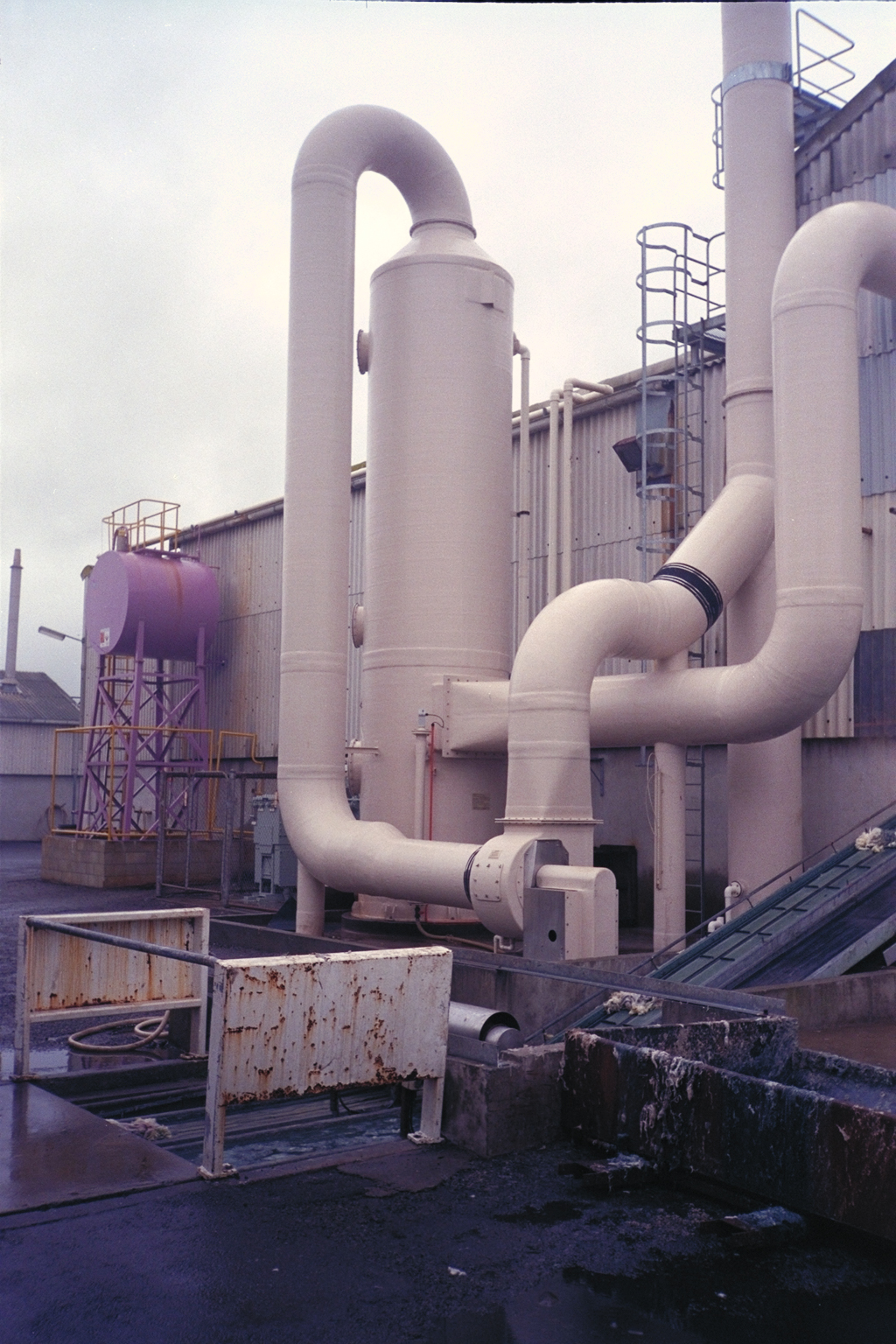Project Date
Industry
Products
1990s
Tannery
Packed Bed Scrubber
Solution
Smaller scrubber for tannery in Dunedin that was required to reduce their odourous hydrogen sulphide emissions to meet Air Discharge Requirements
1990s
Tannery
Packed Bed Scrubber
Smaller scrubber for tannery in Dunedin that was required to reduce their odourous hydrogen sulphide emissions to meet Air Discharge Requirements

1986
Tanneries
Cross-flow wet-packed scrubber, stack,
Tannery in Wiri, Auckland was causing odour problems with neighbours. Gases were extracted from Challenge Cook tanning drums and treated in this crossflow scrubber. Armatec also supplied ducting, fan, stack and chemical dosing equipment. The two stage scrubber was designed to minimise chemical consumption. See paper written.

Air extracted from tanning drums and hydrogen sulphide gas scrubbed with caustic; liquid then sent to onsite sulphide treatment. All fibreglass installation handles the very corrosive liquors and gases.

1986
Petrochemical
Fanstacks
A petrochemical plant has wooden fanstacks that was supplied by original cooling tower vendor. These were inadequate in size, shape and efficiency.
Armatec designed and manufactured high efficiency fanstacks in fibreglass to replace the existing setup. They were assembled on the ground at site, and craned into position in order to minimise plant downtime.
The smooth internal surface gave much improved aerodynamics and improved the overall cooling tower efficiency.
2000
Fertiliser Plants
Ducting, Wet Cyclone, Fans, Stack
The fertiliser company needed to improve the working conditions within its manufacturing building, by extracting air laden with both dust and fluoride fumes. At the same time they wanted to have just one stack discharging to atmosphere, and the discharge from this had to meet their Resource Consent limits.
Armatec designed, manufactured, and installed a hygiene scrubbing system including a wet cyclone scrubber, fan, ducting, and stack. This was done as part of the overall upgrade of the plant’s scrubbing system, with the hygiene system linking into the main scrubber stack.
Fluoride and dust levels in the manufacturing building were much reduced, improving working conditions for plant personnel, at the same time meeting all Resource Consent limits.
2007
Metal Treatment Plants
Multi-throat Venturi, Fan, Mist Eliminator, Stack
A galvanising plant had fine metal particulate and gaseous acid coming out of its plant that impeded on its neighbours, leaving a fine blanket of metal dust in the area. The budget was limited and the solution needed to be innovative to match the company's expectations and resource consent limits. Acid vapour concentrations were also causing corrosion concerns to the factory materials.
Armatec worked with the company to create an affordable hygiene ventilation and particulate capture and acid recovery system for the plant. We utilised re-purposed Armatec equipment from a decommissioned plant, installing a custom ducting design, combined with a multi-throat venturi, sump, mist eliminator and stack combination.
The plant enjoyed a much improved internal working environment. The resource consent limits were achieved and maintenance requirements from corrosion on the plant factory materials have reduced significantly. All was achieved at a limited budget and on time.
Air given off from the biosolids treatment plant at Watercare’s Mangere wastewater treatment plant contains ammonia and odours. This air had to be captured and ducted away for treatment in soil bed filters. However firstly the ammonia had to be removed as it would have had an adverse effect on the soil bed filter biology.